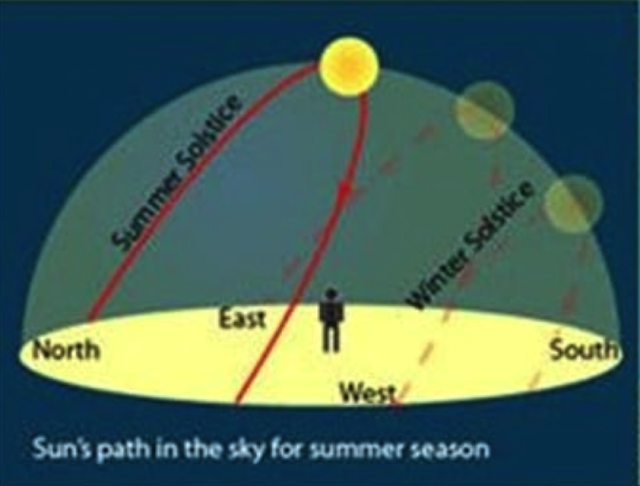Δωρεάν μάθημα Αστρονομίας απο το Duke University
Θα θέλατε να παρακολουθήσετε ένα μάθημα αστρονομίας και μάλιστα δωρεάν;
To coursera σε συνεργασία με το πανεπιστήμιο Duke προσφέρουν ένα δωρεάν μάθημα αστρονομίας διάρκειας 9 εβδομάδων με ένα νέο μοντέλο διδασκαλίας που βασίζεται σε διαδικτυακή παρακολούθηση και αλληλοαξιολόγηση των σπουδαστών. Έναρξη στις 27 Νοεμβρίου
Course Syllabus
Week 1: Positional Astronomy (naked-eye Astronomy)
We will spend our first week familiarizing ourselves with descriptions of the positions and motions of celestial objects.
Week 2: Newton’s Universe
Newtonian physics revolutionized the way we understand our Universe. We will discuss Newton’s laws of mechanics, the conservation laws that follow from them, his theory of gravity and some applications to Astronomy, as well as some properties of radiation. The last clip will be a quick look at the features of quantum mechanics relevant to our course. This will be a particularly busy and challenging week, but hard work here will pay off later.
Week 3: Planets
We will not have time in this course to do any justice to the broad and exciting field of planetary science. We will spend the week on a general review of the properties and structure of our Solar System and our understanding of its origins and history. We will end with some discussion of the exciting discoveries over the past decade of many hundreds of extrasolar planets.
Week 4: Stars
What we know about stars and a bit about how we found out. We will begin with a quick review of the best-studied star of all, our Sun. We will then talk about classifications; H-R diagrams and main sequence stars; distance, mass, and size measurements; binaries; clusters; and stellar evolution through the main sequence
Week 5: Post-Main-Sequence StarsFinal stages of stellar evolution and stellar remnants. Giants, white dwarves, novae, variable stars, supernovae, neutron stars and pulsars.
Week 6: Relativity and Black Holes
We will spend most of this week acquiring an understanding of the special theory of relativity. We will then discuss the general theory in a qualitative way, and discuss its application to black holes, gravitational lensing, and other phenomena of interest.
Week 7: Galaxies
Galactic structure and classification. Active galactic nuclei, quasars and blazars. Galactic rotation curves and dark matter. Galaxy clusters and large-scale structure.
Week 8: Cosmology
What we can say about the universe as a whole. Hubble Expansion. Big bang cosmology. The cosmic microwave background. Recent determination of cosmological parameters. Early universe physics.
We will spend our first week familiarizing ourselves with descriptions of the positions and motions of celestial objects.
Week 2: Newton’s Universe
Newtonian physics revolutionized the way we understand our Universe. We will discuss Newton’s laws of mechanics, the conservation laws that follow from them, his theory of gravity and some applications to Astronomy, as well as some properties of radiation. The last clip will be a quick look at the features of quantum mechanics relevant to our course. This will be a particularly busy and challenging week, but hard work here will pay off later.
Week 3: Planets
We will not have time in this course to do any justice to the broad and exciting field of planetary science. We will spend the week on a general review of the properties and structure of our Solar System and our understanding of its origins and history. We will end with some discussion of the exciting discoveries over the past decade of many hundreds of extrasolar planets.
Week 4: Stars
What we know about stars and a bit about how we found out. We will begin with a quick review of the best-studied star of all, our Sun. We will then talk about classifications; H-R diagrams and main sequence stars; distance, mass, and size measurements; binaries; clusters; and stellar evolution through the main sequence
Week 5: Post-Main-Sequence StarsFinal stages of stellar evolution and stellar remnants. Giants, white dwarves, novae, variable stars, supernovae, neutron stars and pulsars.
Week 6: Relativity and Black Holes
We will spend most of this week acquiring an understanding of the special theory of relativity. We will then discuss the general theory in a qualitative way, and discuss its application to black holes, gravitational lensing, and other phenomena of interest.
Week 7: Galaxies
Galactic structure and classification. Active galactic nuclei, quasars and blazars. Galactic rotation curves and dark matter. Galaxy clusters and large-scale structure.
Week 8: Cosmology
What we can say about the universe as a whole. Hubble Expansion. Big bang cosmology. The cosmic microwave background. Recent determination of cosmological parameters. Early universe physics.
Recommended Background
- An interest in learning something about the universe we live in and a willingness to invest some thought and some work in this.
- The ability to calculate with large and small numbers, e.g. to compute the product of
 and
and  .
. - A familiarity with the rudiments of high-school algebra, the ability to solve an equation like
 to get
to get  and comfortably use this to obtain numerical values for
and comfortably use this to obtain numerical values for  in appropriate units given values of
in appropriate units given values of  ,
,  , and
, and  , and to draw and use graphs to describe the properties of functions.
, and to draw and use graphs to describe the properties of functions. - A basic background in science at a high school level. What elements, atoms, nuclei, magnetic fields, gravity, etc. are will be assumed familiar. The details of their physics or its mathematical description will not.
Suggested Readings
There
are a lot of important and interesting facts to learn about astronomy,
and lectures are a very inefficient way to learn facts. It would be
extremely helpful, but not absolutely necessary, to read any of the many
introductory astronomy texts that are out there as you take this class
and to have it handy as a reference. The Wikibook http://en.wikibooks.org/wiki/General_Astronomy
and Wikipedia entries for the topics mentioned in class would be quite
sufficient for this purpose, as would the freely available online notes
by Nick Strobel at http://www.astronomynotes.com/.
In addition, I recommend downloading and installing a planetarium
application for your computer. Examples of free downloads sufficient
for our purposes include http://www.stellarium.org/ , http://www.astrosurf.com/c2a/ (Windows only) or http://www.ap-i.net/skychart/.
Course Format
There
will be video lectures broken up into clips 8-15min. long, about three
hours of video per week. There will be quizzes to go with these as well
as regular homework assignments.
FAQ
- Will I get a certificate after completing this course?
Yes. Students who successfully complete the class will receive a certificate signed by the instructor.
- Do I need to have had college physics or calculus to take this course?
No. If you have had any of these, you will find them helpful but it
is definitely possible to do this class and enjoy it without them.
Supplementary notes reviewing the technical aspects of the physical
principles we use will be posted to help keep the class as
self-contained as possible.
- Is this a hard course?
It should be. If done right you will have learned in a few short
weeks a lot of truly exciting science, and this will require putting in
some time to work on it, and some hard thinking. It should also be a lot
of fun.
- Do I need a telescope to take this course?
No. I will suggest some observing projects for naked-eye observing
and some for telescope observing. If you can find a darkish place to
look up at the night sky this will be both rewarding and instructive,
and a telescope can amplify both effects if you know how to use it. But
not all of us have access to such locations or equipment, and installing
one of the planetarium software options allows you to make
“observations" on your monitor.
Looking for more courses?
Browse our course explorer
https://www.coursera.org/course/introastro
Browse our course explorer









Σχόλια
Δημοσίευση σχολίου